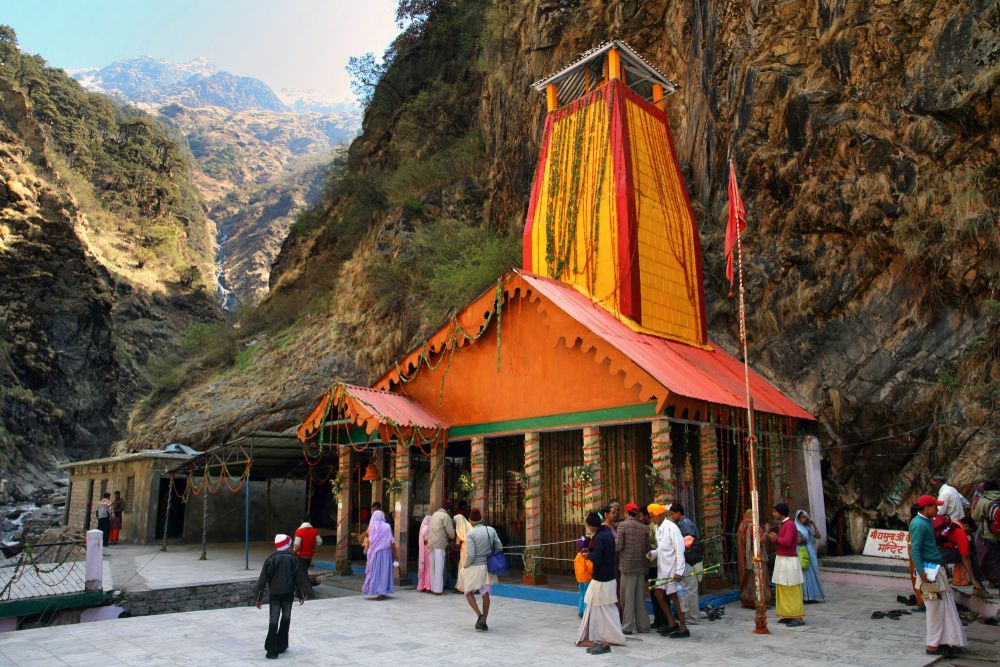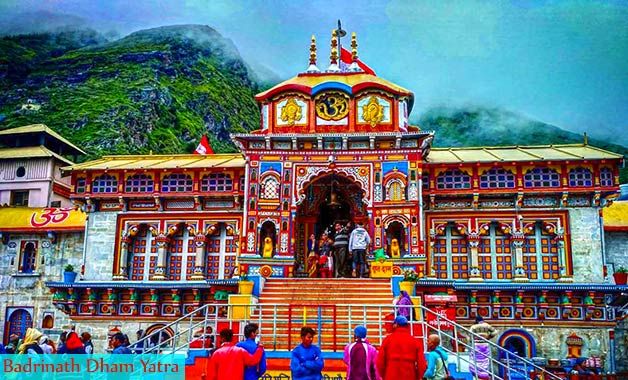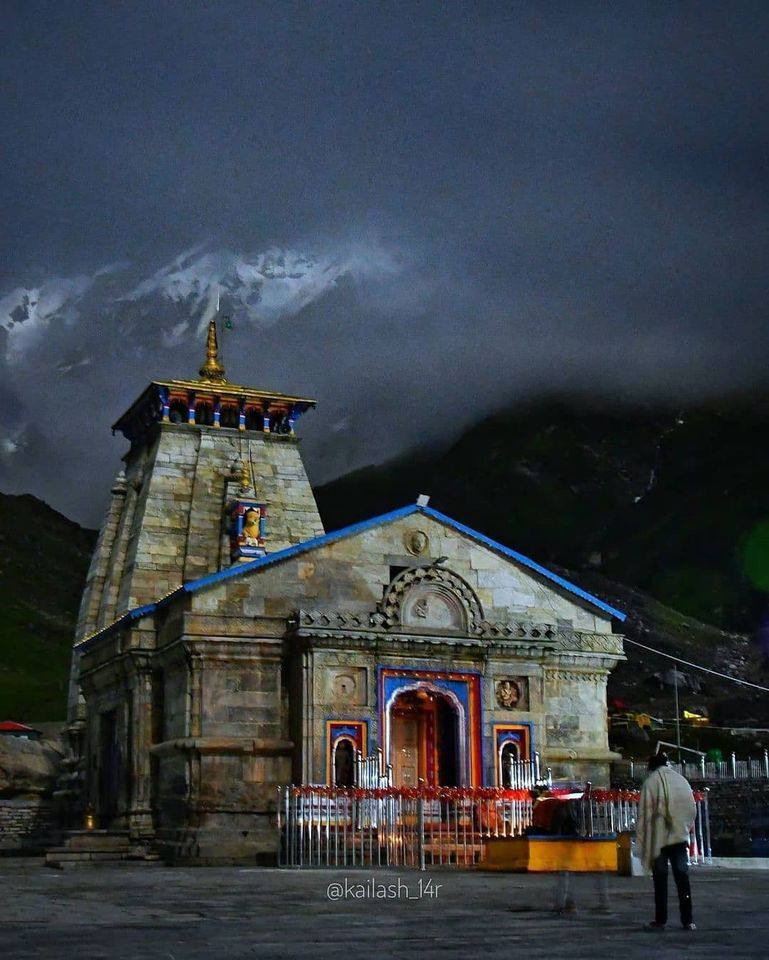Char Dham Yatra (Ex. Haridwar)



12 Day 11 Night
Day 1:Reporting haridwar.12:00 Check-in hotel.13:00 Lunch.20:00 Dinner.
Day 2:haridwar-masoori-badkot
Prakasheshwer temple: It is popularly known as Prakasheshwar Mahadev Mandir among locals as well as visitors. Shiv Mandir is one of the famous religious places of uttarakhand. This temple is specifically dedicated to Lord Shiva. Everyday the temple is specially decorated with flowers for lord shiva. Special poojas are held on the occasion of Shivratri & Sawaan.
kempty fall: Gigantic Fall with somersault of the streams before hitting the bottom, Kempty Falls is the most popular and one of the oldest tourist spot near Mussoorie. Developed before more than 150 years ago by a British man, Kempty Falls is the most fascinating picnic spot or a perfect day out place nearby Mussoorie at a distance of 15 km.
Dinner 20:00.
Day 3:Breakfast 4:00.Badkot-Jankichatti(47km).
Jankichatti-yamunotri(1st dham)pack lunch (12km by steps)
Yamunotri: On the western side of Garhwal Himalayas, in the Uttarkashi district of Uttarakhand, lies the holy place of Yamunotri. About 3,293 metres above the sea level, Yamunotri stands proudly with its enormous mountain peaks, glaciers and gushing waters of Yamuna. River Yamuna, the second most sacred river of India, originates in Yamunotri, making it one of the pilgrimage sites in the Chota Char Dham Yatra in Uttarakhand.
Back to badkot at night dinner 20:00.
Day 4:Breakfast at 4:00.11:00 Hotel check-in.12:00 Lunch.
Badkot-shivgufa-uttarkashi(netala)
Uttarkashi: Uttarkashi, meaning Kashi of the north, is a town located in Uttarkashi district in Uttarakhand, India. Uttarkashi town is headquarters of the district. Uttarkashi is also known as Somya Kashi. Uttarkashi is a Hindu religious place for spiritual and adventurous tourism. Uttarkashi town is also called as Shivnagri. The town has number of temples and ashrams. Uttarkashi is known for its religious people, weather, education.
Kashi vishwanath: Kashi Vishwanath Temple is a Hindu temple dedicated to Shiva. It is located in Vishwanath Gali, in Varanasi, Uttar Pradesh, India. The temple is a Hindu pilgrimage site and is one of the twelve Jyotirlinga shrines. The presiding deity is known by the names Vishwanath and Vishweshwara (IAST: Viśvanātha and Viśveśvara), literally meaning Lord of the Universe.
Night stay netala.Dinner 20:00.
Day 5:Netala-gangotri kund-gangotri(2nd dham)
Gangotri: Gangotri is a town and a Nagar Panchayat (municipality) in Uttarkashi district in the state of Uttarakhand, India. It is 99 km from Uttarkashi, the main district headquarter. It is a Hindu pilgrim town on the banks of the river Bhagirathi – the origin of the river Ganges. The town is located on the Greater Himalayan Range, at a height of 3,100 metres (10,200 ft). According to a popular Hindu legend, the goddess Ganga descended here when Shiva released the mighty river from the locks of his hair.
Afternoon lunch.After lunch visit kaalbhairav temple.
Kaal bhairav temple: Bhairav ghati is situated on the way to Gangotri Dham.It is situated around 7 kms before the holy temple of Goddess Ganges.Bhairav ghati is surrounded by trees which is so dense that it seems like a forest.It is said that one should visit Bhairav temple before going to Gangotri dham.Bhairav Temple is a famous location in Uttarkashi situated in Chowk area, near Uttarkashi in which place there are around 365 temples exist according to legends. The well-known Chinese traveler Hiuen Tsang who visited India in 629 AD had referred this place as Brahma Pura while the Hindu text Skanda Purana, calls this place as Varunavata. Uttarkashi town is situated along the River Ganga at a distance of 199 kilometres from Dehra Dun, very similar in features that enrich the famous location Varanasi.Bhairav is considered a form of Shiva, who guards a Shakti Peeth from the attacks of enemies and that is why one can find Bhairav temples constructed nearby all Shakthi Peeths. In Uttrakhand there are at least six Bhairav temples, which are at Kedarnath, Almora, Bageshwar, Devprayag, and those near Uttarkashi and Gangotri.Bhairava temples or shrines are generally situated within or near most Jyotirlinga temples, the sacred twelve shrines honoring Shiva across India. Kashi Vishwanath Temple, Varanasi is one such temple and the Mahakaleshwar Temple at Ujjain is another. Kal Bhairav Temple worshiper’s include Kapalika and Aghori sects of Shaivism, while at these temples at Kashi and Ujjain; one can find Patal Bhairav and Vikrant Bhairav shrines.
Back to netala.Dinner at 20:00.
Day 6:Breakfast 5:30.Netala-phata.Lunch on way.Dinner 20:00
Guptkashi: Guptakashi, Gupta Kashi or Guptkashi is a fairly large town located at an elevation of 1,319 metres (4,327 ft) in the Kedar-khanda ('khanda' means "sector"), in Garhwal Himalayas of Rudraprayag district in Uttarakhand, India. It is known for its ancient Vishwanath Temple dedicated to the god Shiva, which is similar to the one in Varanasi (Kashi). The other well known temple here is dedicated to Ardhanareshvara, a half man half woman form of Shiva and Parvati. The name Guptakashi has legendary significance linked to the Pandavas, the heroes of the Hindu epic Mahabharata.[1][2][3] Its religious importance is considered next to that of Varanasi, believed to be the most pious of all Hindu pilgrimage sites.
Chauranginath temple.
Day 7:Phata-Sitapur(sonprayag)
Sonprayag: Sonprayag is a village in the Rudraprayag district of Uttarakhand state in India. Approx. 73 Kilometres from Rudraprayag Town, the district headquarter. Situated on the banks of river Mandakini River, it is a proposed Y-forked railway junction on Chota Char Dham Railway for two different railways going to Kedarnath and Badrinath.
Sonprayag-Kedarnath(3rd dham)(18km by steps)
Kedarnath:The temple is not directly accessible by road and has to be reached by a 22 kilometres (14 mi) uphill trek from Gaurikund. Pony, mule and manchan service is available to reach the temple. According to Hindu legends, the temple was initially built by the Pandavas, and is one of the twelve Jyotirlingas, the holiest Hindu shrines of Shiva.[2] The Pandavas were supposed to have pleased Shiva by doing penance in Kedarnath.[3][2] The temple is one of the four major sites in India's Chota Char Dham pilgrimage of Northern Himalayas and is the first of the Panch Kedar pilgrimage sites. This temple is the highest among the 12 Jyotirlingas.[4] It is one of the 275 paadal petra sthalams expounded in the Tevaram, a sacred Tamil Shaivite text written during the 6th and 7th centuries by 63 saints called Nayanars. This temple is sung of by Thirugnanasambandar, Appar, Sundarar and Sekkizhar in their Tevaram texts.
Day 8:Return from Kedarnath.Lunch and Dinner when you come back.
Day 9:Breakfast 8:00.Lunch at 12:00.
Pipalkoti: Pipalkoti is a village in Chamoli district in Uttarakhand state of India. The PIN code of Pipalkoti is 246472. Pilakoti is located in hilly area at an elevation of about 1259 mtr. Pipalkoti is connected by National Highway 7 (Former National Highway 58).[1][2] Pipalkoti village is located on the banks of Alaknanda river and falls in Garhwal Himalaya mountain ranges. It is a halting point for tourists and pilgrims on way to Badrinath and Hemkund Sahib.
Dinner 20:00.
Day 10:pipalkoti-Badrinath(4th dham)
Badrinath: Badarinath or Badarinarayana Temple is a Hindu temple dedicated to Vishnu. It is situated in the town of Badrinath in Uttarakhand, India. The temple is also one of the 108 Divya Desams dedicated to Vishnu—holy shrines for Vaishnavas—who is worshipped as Badrinath. It is open for six months every year (between the end of April and the beginning of November), because of extreme weather conditions in the Himalayan region. The temple is located in Garhwal hill tracks in Chamoli district along the banks of Alaknanda River. It is one of the most visited pilgrimage centers of India, having recorded 2.8 million (28 lakh) visits in just 2 months in 2022.[1] It is one of the Char Dham pilgrimage sites.
Vishnumath: Vishnuprayāg is the confluence of India's Alaknanda and Dhauliganga rivers—the first of five major confluences of the Alakanda known as the Panch Prayag. It is located at an elevation of 1,372 metres (4,501 ft) in the Chamoli district in the state of Uttarakhand.Vishnuprayāg derives its name from Vishnu, reflecting a belief that it is the place where the sage Narada meditated and offered to worship to god Vishnu, after which Vishnu appeared before him.Nearby points of interest include the Vishnuprayag Dam, Kagbhusandi Lake,[3] and Hanuman Chatti, a temple dedicated to the god Hanuman.
Joshimath: Joshimath, also known as Jyotirmath, is a town and a municipal board in Chamoli District in the Indian state of Uttarakhand. Located at a height of 6,150 feet (1,875 m),[3] it is a gateway to several Himalayan mountain climbing expeditions, trekking trails and pilgrim centres like Badrinath.[4] It is home to one of the four cardinal pīthas established by Adi Shankara.
Day 11:Breakfast 6:00.Pipalkoti-Haridwar (234.7 km).
Nandprayag: Nandaprayag is a town and a nagar panchayat in Chamoli district in the Indian state of Uttarakhand. Nandaprayag is one of the Panch Prayag (five confluences) of Alaknanda River and lies at the confluence of the Alaknanda River and Nandakini River.[2] Nandaprayag was once the capital of the Yadu kingdom.
Rudraprayag: Rudraprayag is a city and a municipality in Rudraprayag district in the Indian state of Uttarakhand. Rudraprayag is one of the Panch Prayag (five confluences) of Alaknanda River, the point of confluence of rivers Alaknanda and Mandakini. Kedarnath, a Hindu holy city is located 86 km from Rudraprayag. The man-eating Leopard of Rudraprayag hunted and written about by Jim Corbett dwelled here.
Karan prayag: Karnaprayag is a town and municipal board in the Chamoli District in the Indian state of Uttarakhand. Karnaprayag is one of the Panch Prayag (five confluences) of Alaknanda River, situated at the confluence of the Alaknanda and Pindar River.
Lunch while running.Dinner 20:00.
Day 12:After Breakfast All are free.
Extra sight seeing:Lakha Madal,Ukimath,Chopta,Triyuginarayan
Lakha Mandal: Lakhamandal is an ancient Hindu temple complex, situated in the Jaunsar-Bawar region of Dehradun district in the state of Uttarakhand. The temple is dedicated to lord Shiva.[1] This temple is popular among the Shaivites, who believe that a visit to this temple shrine will end their misfortunes.
Ukimath: Ukhimath (also spelled Okhimath) is a small town and a Hindu pilgrimage site in Rudraprayag district, Uttarakhand in India. It is situated at an elevation of 1,311 meters and at a distance of 41 km from Rudraprayag. During the winter, the Utsava Idols from the Kedarnath Temple, and Madhyamaheshwar Temple are brought to Ukhimath and worshipped here for six months. Ukhimath can be used as center destination for visiting different places located nearby, the Madhyamaheshwar Temple, Tungnath Temple and Deoria Tal (a natural fresh water lake) and many other picturesque places.[1] According to Hindu Mythology, the wedding of Usha (Daughter of Banasura) and Aniruddha (Grandson of Lord Krishna) was solemnized here. By name of Usha this place was named as Ushamath, now known as Ukhimath. King Mandhata had performed severe penances to Lord Shiva here. During the winter, the Kedarnath and Madhyamaheshwar Temples are closed due to heavy snowfall in the area. As a result, the Utsava Idols of Kedarnath and Madhyamaheshwar are brought from Kedarnath and Madhyamaheshwar to the Omkareshwar Temple in Ukhimath. The winter puja of Kedarnath and Omkareshwar (the presiding deity of Ukhimath) is performed here. The Omkareshwar Temple is located at Ukhimath, which is at a distance of 41 km from Rudraprayag.
Chopta: Chopta is an unspoiled natural destination lying in the lap of the Uttarakhand Himalayas and offers views of the imposing Himalayan range including Trishul, Nanda Devi and Chaukhamba. It is located at an elevation of 2,709 metres (8,888 ft) above sea level. Chopta village is surrounded by forests of pine, deodar and rhododendron and is rich in flora and fauna include rare species of birds and musk deer.
Triyuginarayan(Akhand dhuni temple): Triyuginarayan Temple (Sanskrit: त्रियुगी-नारायण) is a Hindu temple located in the Triyuginarayan village in Rudraprayag district, Uttarakhand, India. The ancient temple is dedicated to god Vishnu. Its fame is credited to the legend of god Shiva’s marriage to goddess Parvati witnessed by Vishnu at this venue and is thus a popular Hindu pilgrimage sites.[1][2] A special feature of this temple is a perpetual fire, that burns in front of the temple. The flame is believed to burn from the times of the divine marriage.[3] Thus, the temple is also known as Akhand Dhuni temple.
